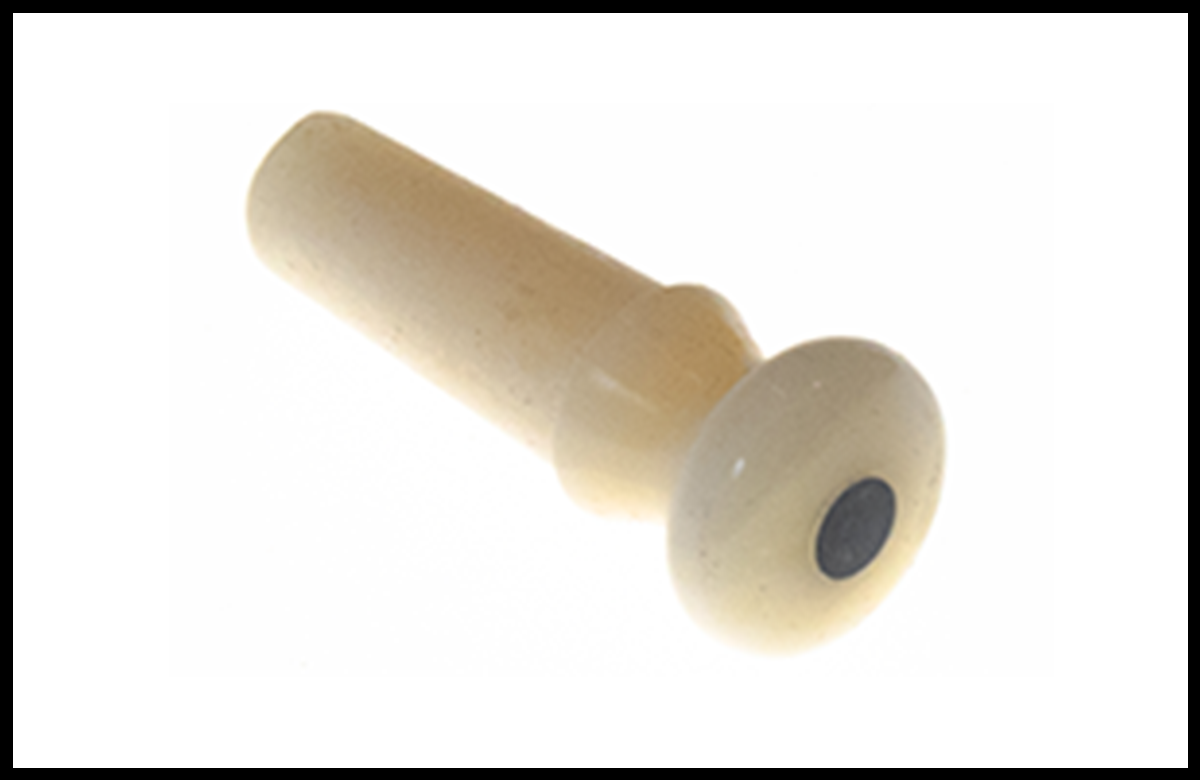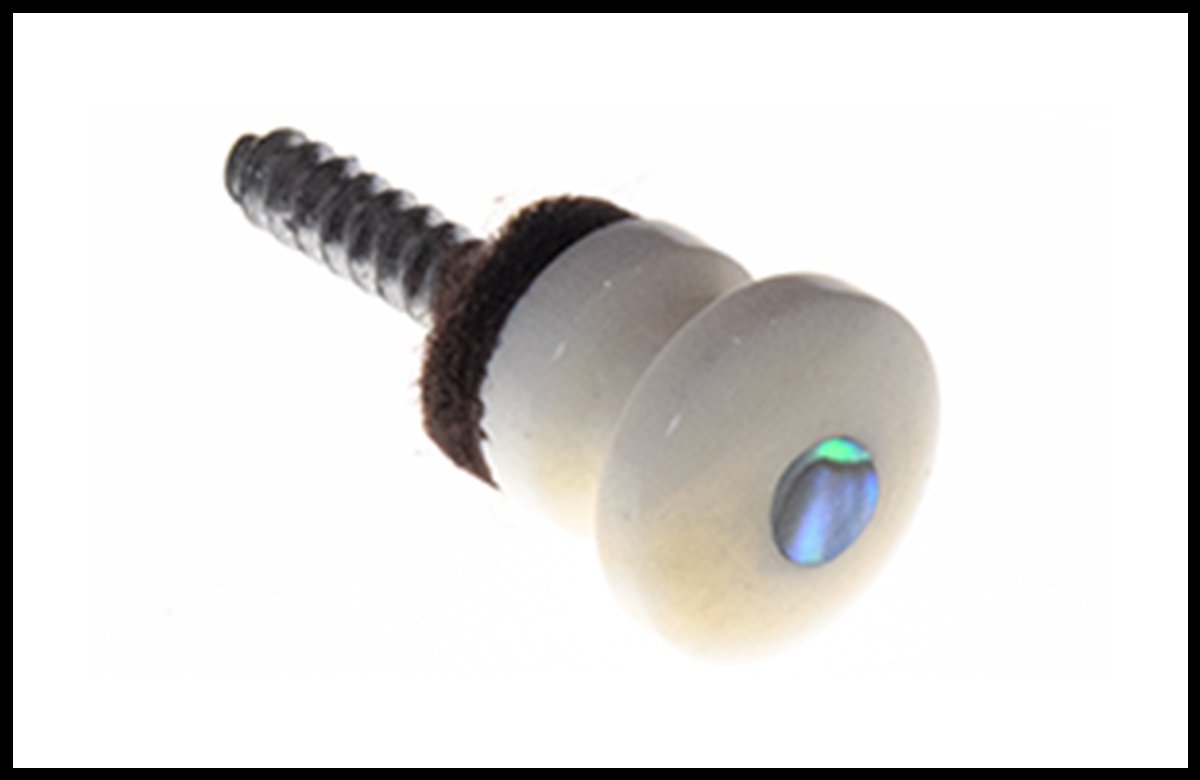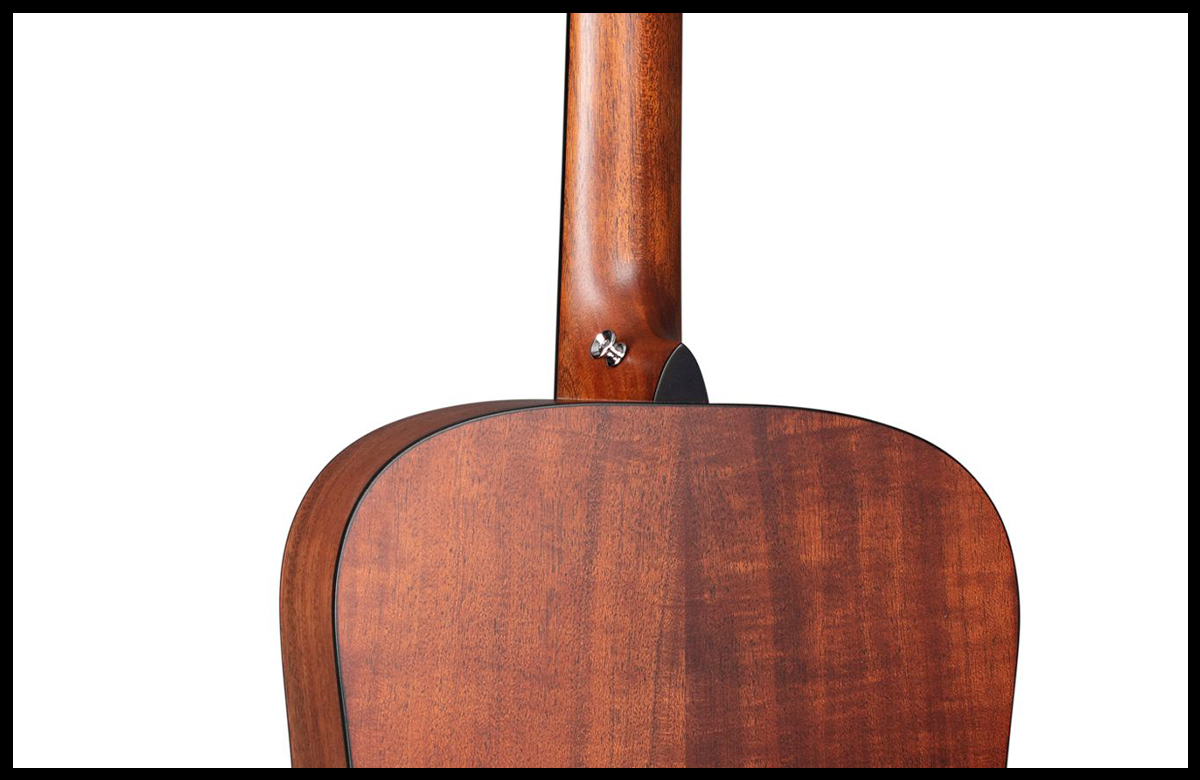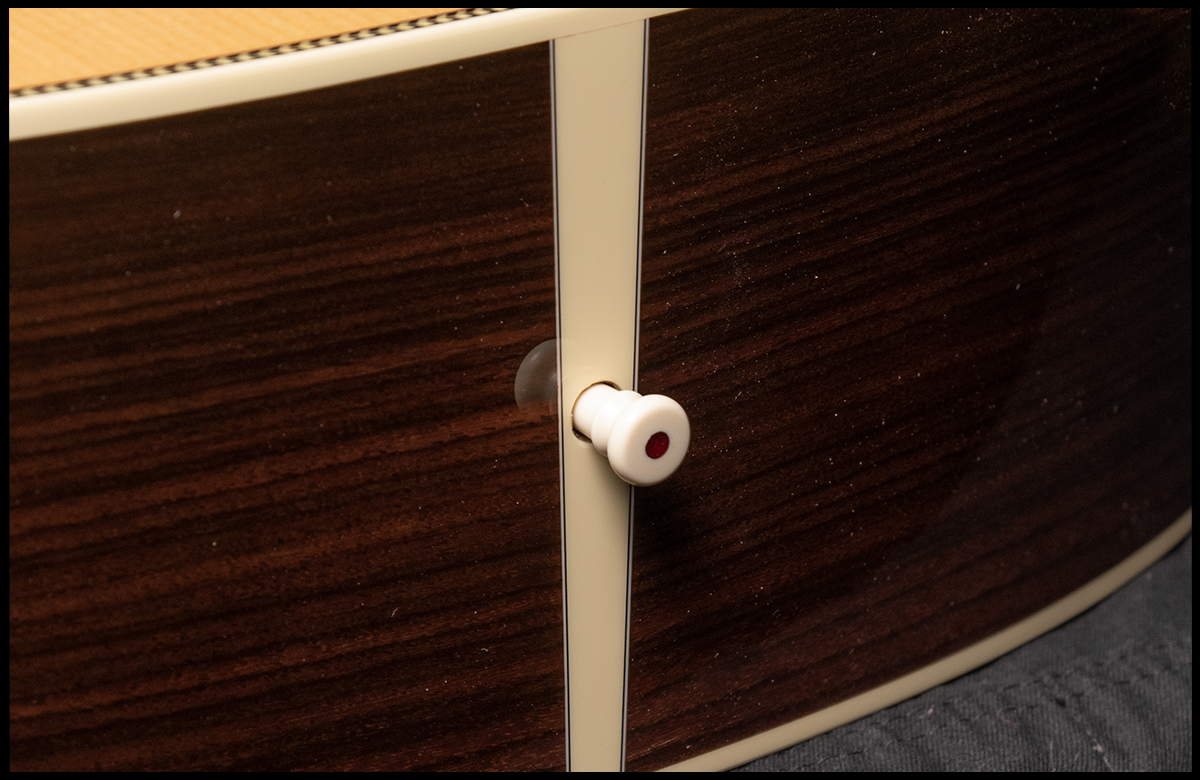Strap Button vs End Pin
Knowing Your Pins from Your Buttons
You might be surprised how many guitarists do not know the difference between a strap button and an end pin. Maury’s Music encounters this issue so often that we would like to set the record straight, with the hope that customers will not order the one thinking it is the other.
When picturing an acoustic guitar hanging on a wall, with the headstock near the ceiling and the body nearer the floor, an installed end pin is located where the sides meet at the very bottom of the guitar. A strap button is typically smaller in size and is screwed into place at the opposite end of the body, usually in the heel of the neck, on the treble side.

Bone endpin with ebony inlay
Any confusion about this topic is understandable, considering that the purpose of both items is to attach a strap to the guitar. But whereas all Martin guitars come with some sort of end pin by default, which may be inserted and removed by the guitarist as needed, only certain modern acoustic-electric models ship from the factory with a strap button already installed, and meant to remain permanently in place.
Strap Button
For much of their history, guitarists played sitting down. After the modern American guitar was invented by C. F. Martin in the mid-1800s, the instrument moved out of the parlor and onto the concert stage. To allow for playing while standing up, an end pin provided the means to attach some sort of strap onto the guitar’s body which was then tied around the headstock, beyond the nut at the end of fingerboard.
While this traditional method is still used today, many modern guitarists prefer having both ends of the strap closer to the player’s body. Installing a strap button achieves this goal. Today, the strap button is usually located on the treble side of the neck’s heel. This is the location where Martin preinstalls strap buttons on certain acoustic-electric models.

Bone strap button with abalone inlay
In fact, that is the ONLY location for a strap button recommended by Martin and Blueridge for aftermarket installation. Any damage that may occur to a guitar that has a strap button installed in any other location will not be covered by the warranty to the original owner.
Martin goes so far as to recommend that you only go to an authorized Martin repair location, such as Maury’s Music, if you want to have a strap button installed. No matter who does the installation, the recommended location is the safest place for a strap button. Here’s why: The neck is made of thick, stable wood that can accommodate a button to be screwed into place and withstand the stress placed upon the strap during performance or when the guitar is being otherwise manipulated via the strap.
Although you may see vintage guitars with a strap button installed into the heel cap at the bottom of the heel, this requires the strap to be twisted into an awkward angle while playing music, so it may come off of the button, sending the guitar crashing to floor. Damage from such a mishap would not be covered by the warranty.
We have a good friend who took their expensive Martin to a guitar tech of great reputation and included an order for a strap button during a setup. The repairman asked where the customer wanted the button, and the reply was “the usual place.”

Stock chrome strap button on the Martin D-16E Mahogany
The guitar’s owner assumed that would mean the treble side of the heel. The older gentleman screwed the strap button directly into the thin tonewood shoulder on the bass side of the neck! Back when he was a touring professional musician in the 1960s and ‘70, this was the “usual place” for a strap button. That is no longer the case.
While it did not cause any issues, any future cracking or other damage resulting from the strap button location would not be covered by the warranty on that guitar. So, consider these words of wisdom if you intend to install a strap button yourself, or have someone do it for you other than Maury’s Music.
With some irony, Martin’s latest model, the SC-13E has a strap button already installed in the bass side shoulder. This is because the SC design has no neck heel at all. Therefore, it is assumed, any issues that might arise due to the strap button placement should be covered by the warranty, since it was installed by Martin prior to shipping the guitar to the dealer.
End Pin
The end pin on Martin guitars dates from the time when guitars were typically much smaller than we see today. So it was easy to connect a strap from the end pin at the bottom of the guitar to the headstock. End pins haven’t changed much since those days. A hole with a smooth bore is drilled through the thin tonewood, and then into the thicker end block on the inside of the guitar. The end pin’s shaft, be it made of wood, bone, or plastic, is shaped to thicken in girth as it approaches the knob. This allows the pin to fit snuggly into the hole, while still be removable when desired.
When an onboard electronic pickup is installed into an acoustic guitar, the end pin is often replaced with the metal jack where the guitarist plugs in the cable going to the amp or sound system. Most pickup installations require the default hole to be drilled out large enough to accommodate the 1/4” jack. The new jack also works as an end pin for the purposes of connecting a guitar strap, but it requires the player to connect that guitar strap to the jack before plugging in the cable.

Stock endpin on a Martin HD-28
Blueridge acoustic-electric guitars, like the BR-143 CE, have a typical 1/4" jack in place of a traditional endpin, which also works as an anchor for a strap. On Martin acoustic-electric guitars, the end pin is installed separately from the cable jack. The pin is positioned forward of the jack, which allows the onboard battery compartment to be accessed without having to disconnect the strap. In this case, the pin is screwed into the end block and is not meant to be removed like a traditional smooth-bore end pin.
Although both pieces of guitar hardware are used to attach a strap to the instrument, one man’s pin is definitely not another man’s button! The end pin goes into the end block of a guitar; a strap button is installed in the heel of the neck. Please keep this in mind when discussing such things and especially when ordering guitar accessories on line.
We will also mention here that there are other kinds of pins and other kinds of buttons found on acoustic guitars, but we will discuss those in future blog posts.